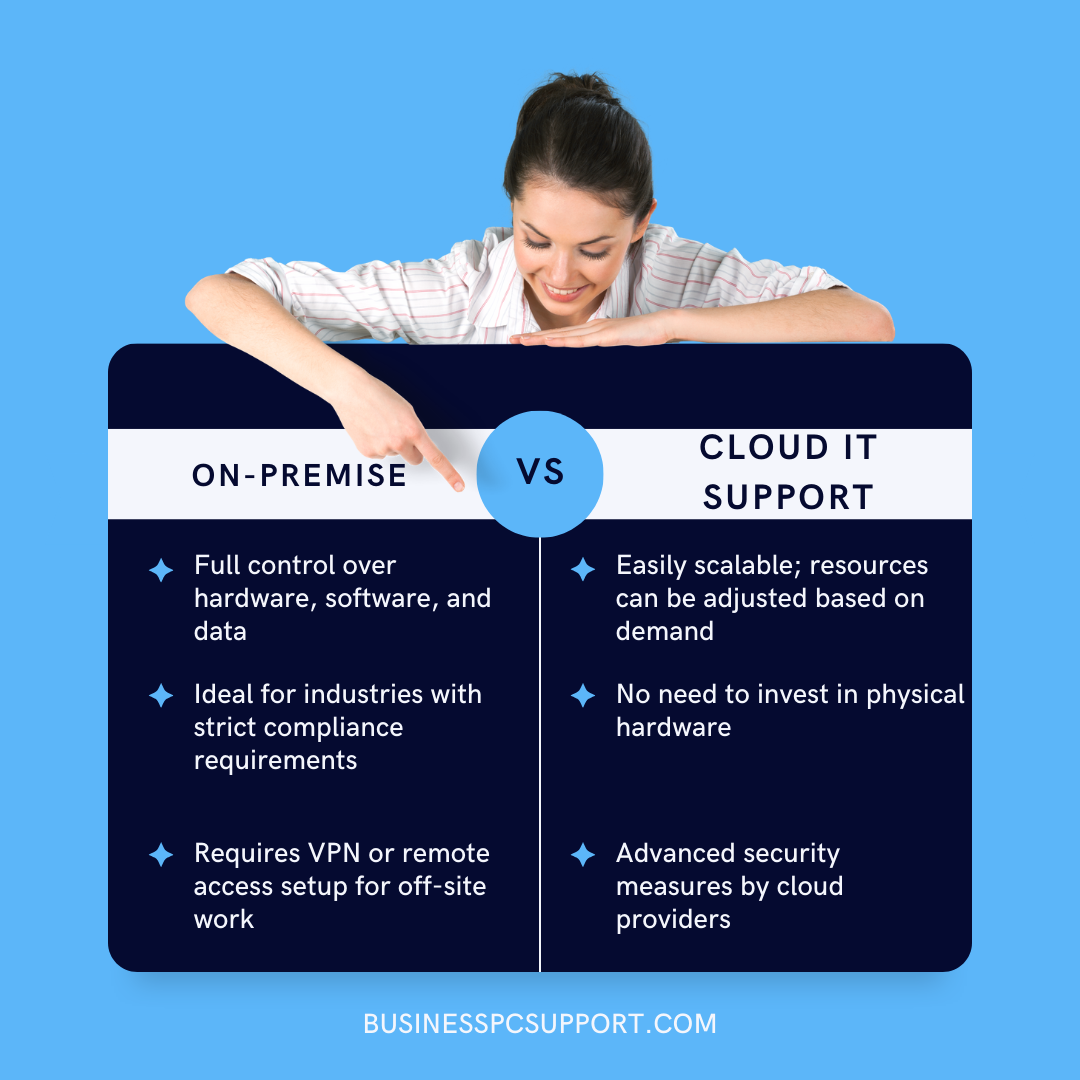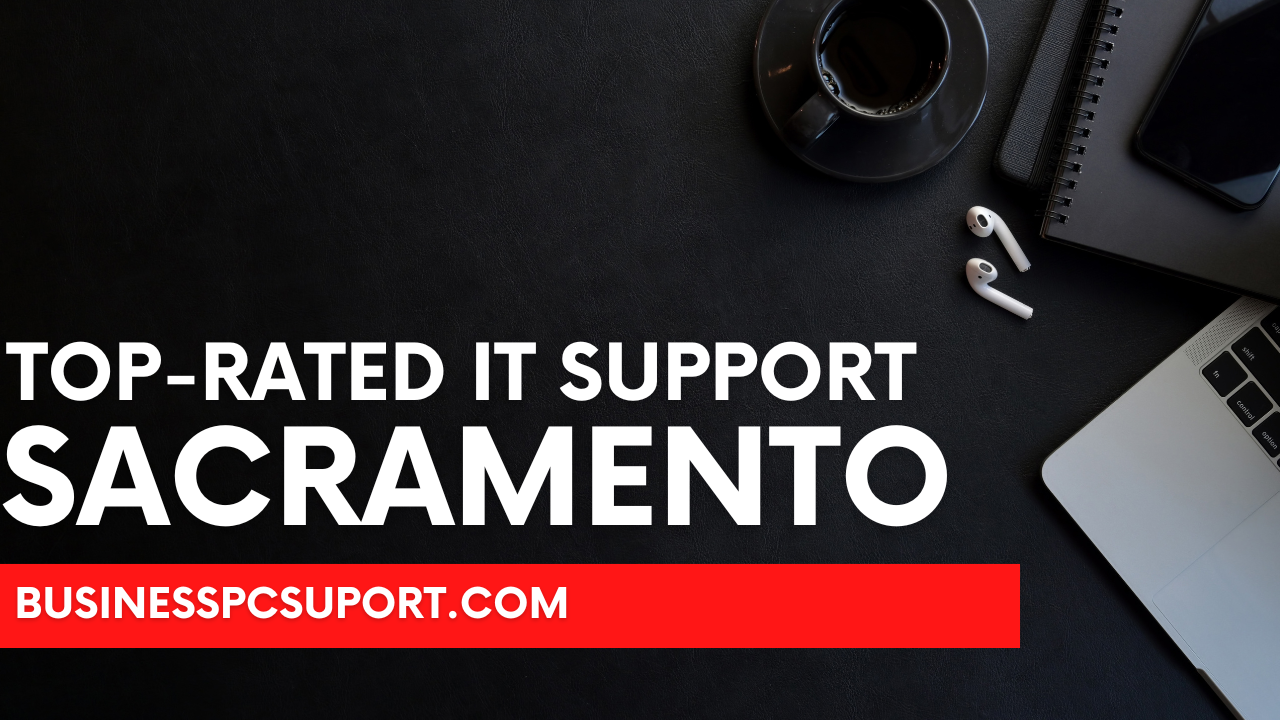On-Premise vs. Cloud IT Support: Which is Right for Your Business?
In today’s fast-paced digital landscape, businesses rely heavily on IT infrastructure to stay competitive and efficient. When it comes to managing your IT systems, one of the most critical decisions you’ll face is choosing between on-premise and cloud-based IT support. The debate of On-Premise vs. Cloud IT Support is essential as both options have their pros and cons, and the right choice depends on your business needs, budget, and long-term goals. Let’s break down the key differences to help you make an informed decision.
Table of contents
What is On-Premise IT Support?
On-premise IT support refers to maintaining and managing your IT infrastructure locally. This means all your servers, data storage, and software are housed within your physical office or data center. Your IT team (or an external provider) is responsible for the setup, maintenance, and security of these systems.
Pros of On-Premise IT Support:
- Full Control: You have complete ownership and control over your hardware, software, and data.
- Customization: On-premise solutions can be tailored to meet your specific business requirements.
- Security: For industries with strict compliance requirements (e.g., healthcare, finance), keeping data on-site can provide peace of mind.
- No Internet Dependency: Your systems remain operational even without an internet connection.
Cons of On-Premise IT Support:
- High Upfront Costs: Purchasing and maintaining hardware, software licenses, and infrastructure can be expensive.
- Maintenance Burden: Your team is responsible for updates, backups, and troubleshooting, which can be time-consuming.
- Scalability Challenges: Expanding your infrastructure requires additional hardware and resources.
- Disaster Recovery Risks: If your physical location is compromised (e.g., fire, flood), data loss can occur without proper backups.
What is Cloud IT Support?
Cloud IT support involves using remote servers hosted on the internet to store, manage, and process data. Instead of maintaining physical hardware, you rely on third-party providers like AWS, Microsoft Azure, or Google Cloud to handle your IT infrastructure.
Pros of Cloud IT Support:
- Cost-Effective: Pay-as-you-go models eliminate the need for large upfront investments.
- Scalability: Easily scale resources up or down based on your business needs.
- Accessibility: Access your data and applications from anywhere with an internet connection.
- Automatic Updates: Cloud providers handle software updates, security patches, and maintenance.
- Disaster Recovery: Cloud providers often offer robust backup and recovery solutions.
Cons of Cloud IT Support:
- Internet Dependency: Your operations rely on a stable internet connection.
- Security Concerns: While cloud providers invest heavily in security, some businesses may hesitate to store sensitive data off-site.
- Limited Customization: Cloud solutions may not offer the same level of customization as on-premise systems.
- Ongoing Costs: Subscription fees can add up over time, potentially exceeding on-premise costs in the long run.
Key Considerations for Choosing Between On-Premise and Cloud IT Support
- Budget: If you have the capital for upfront investments and prefer predictable costs, on-premise might be better. For lower upfront costs and flexible pricing, consider the cloud.
- Scalability: If your business is growing rapidly or has fluctuating demands, the cloud offers greater flexibility.
- Security and Compliance: Evaluate your industry’s regulatory requirements and whether your data can be securely stored off-site.
- IT Expertise: On-premise solutions require a skilled IT team, while cloud providers handle most technical aspects.
- Business Goals: Consider your long-term objectives. Are you looking for agility and innovation (cloud) or control and stability (on-premise)?
Hybrid Solutions: The Best of Both Worlds
For many businesses, a hybrid approach offers the perfect balance. You can keep sensitive data on-premise while leveraging the cloud for scalability and flexibility. This model allows you to customize your IT strategy to meet specific needs without compromising on security or efficiency.
Conclusion
There’s no one-size-fits-all answer when it comes to choosing between on-premise and cloud IT support. Each option has its strengths and weaknesses, and the right choice depends on your unique business requirements. By carefully evaluating your budget, scalability needs, and security concerns, you can make an informed decision that sets your business up for success.
Whether you go on-premise, cloud, or hybrid, the key is to partner with a reliable IT support provider who understands your goals and can help you navigate the ever-evolving tech landscape.
What’s your preference—on-premise, cloud, or hybrid? Share your thoughts in the comments below!




